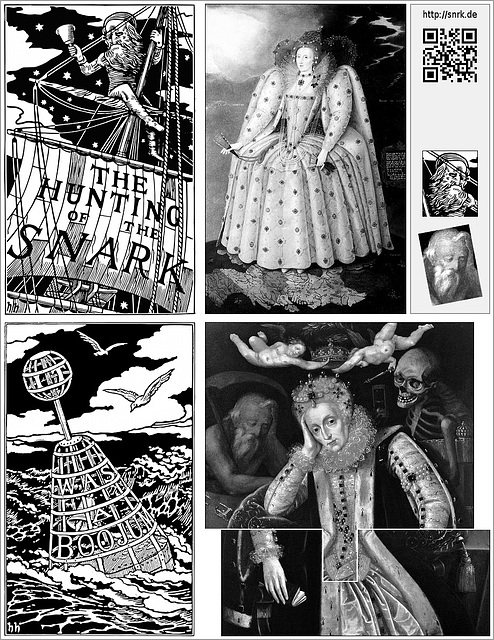Ipernity's Dragon
Rabenschwarz
Crows are Artists too!
h91
h90
h80
h70
h60
h50
h40
h30
h20
h12
h11
h10
h01
h00
The Bard (detail)
Henry Holiday's and M.C. Escher's allusions to Joh…
Monster Feet
Weeds turned Horses (detail)
Weeds turned Horses (BW)
Weeds turned Horses
An Expedition Team
Holiday - Millais- Anonymous - Galle, detail
Holiday and Gheeraerts I
Doré (1863), Holiday (1876), Doré (1866)
Henry Holiday alluding to John Martin
Walking the Dog
Detail from John Martin's "The Bard"
Optimum Inequaliy
Beagle Laid Ashore
Beagle Laid Ashore (2)
Beagle Landing
Hans Holbein, The Ambassadors, 1533 (modified)
pictorial allusions
A Nose Job
Bremsklötze niederwalzen!
Trumpet
MeQR
Me
Neuman, Butcher, Jowett
Anne Hale Mrs. Hoskins
Ikegami matsuri
Taichung Temple
See also...
See more...Keywords
Authorizations, license
-
Visible by: Everyone -
Attribution + non Commercial + no derivative
-
2 217 visits
The Hunting of the Snark


The Hunting of the Snark (1876) has been written by Lewis Carroll and illustrated by Henry Holiday.
The Image shows Henry Holiday's illustrations to the front cover and the back cover of the book and paintings depicting Queen Elizabeth I, to which Henry Holyday may have alluded.
There are many more pictorial allusions in Henry Holiday's Snark illustrations.
The Image shows Henry Holiday's illustrations to the front cover and the back cover of the book and paintings depicting Queen Elizabeth I, to which Henry Holyday may have alluded.
There are many more pictorial allusions in Henry Holiday's Snark illustrations.
- Keyboard shortcuts:
Jump to top
RSS feed- Latest comments - Subscribe to the comment feeds of this photo
- ipernity © 2007-2025
- Help & Contact
|
Club news
|
About ipernity
|
History |
ipernity Club & Prices |
Guide of good conduct
Donate | Group guidelines | Privacy policy | Terms of use | Statutes | In memoria -
Facebook
Twitter

Elizabeth I & Her People
www.npg.org.uk/whatson/elizabethi/exhibition.php
The following question may answer to help the first question: Why do writers "hide" elements of works of other writers in their own writings?
web.archive.org/web/20161226172011/http://empirecontact.com/concept/allusion.html: "The most powerful stories operate on more than one level. They allude to another story or myth, indirectly referencing something biblical, classical, mythological, epic, poetic, musical, et cetera. Doing so engages the conscious and subconscious mind at once, making the story bigger than it is by itself; making it universal. Analogy, allegory, and conceit can also be used to the same purpose [...]"
Sign-in to write a comment.